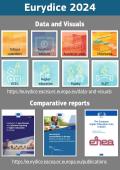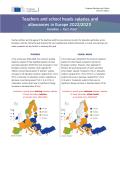Organisation of school time in Europe. Primary and general secondary education: 2015/16 school year
Organisation of school time in Europe. Primary and general secondary education: 2015/16 school year
Full version EN
Description:
The School Calendar contains national data on the length of the school year, the start and the end dates of each school year, and the timing and length of school holidays. It covers both primary and secondary education. The information is available for 36 countries.





